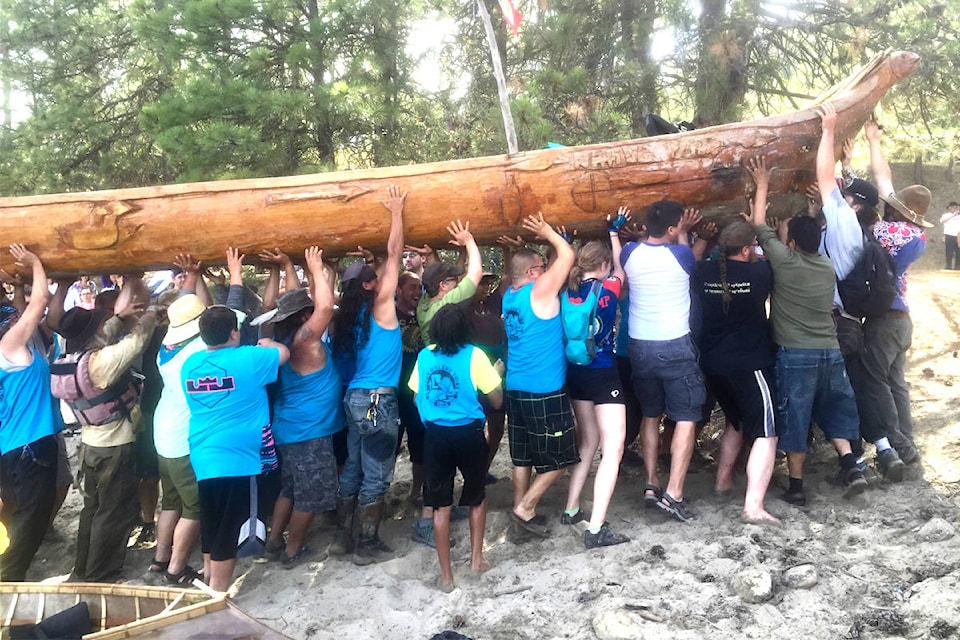By Eileen Delehanty Pearkes
The July opening for the kokanee fishery has come and gone. If you missed it, that’s understandable. Due to lower numbers in a pre-summer survey, the government opened the fishery for a total of four days all season, two in April and two in July. Fishermen are grumbling, while biologists are hopeful for an upswing cycle to come.
Welcome to fishing in the upper Columbia basin, a region beleaguered by the impact of dams.
About 7,500 years ago, nature’s dams — waterfalls — once stranded ocean salmon in the West Arm and Kootenay Lake as glaciers melted. Some of these salmon evolved into the iconic kokanee. Its salt-water twin (the sockeye), and the coho, Chinook and Steelhead trout, continued to seek spawning habitat where they could. Up the Columbia/Arrow Lakes. Up the Slocan and Kootenay River valleys, to Slocan Lake and Slocan Pool. They came back every year until 1942 when Canada gave the U.S. permission to complete Grand Coulee Dam without salmon ladders.
The ladders were possible to build — just expensive. Gradually, many people forgot about the salmon. Passage over the massive dams seemed technically impossible.
But the Upper Columbia United Tribes (UCUT), based in Spokane, Washington, did not forget. They have conducted scientific studies for two decades to prove otherwise. Recently, they released an uplifting report. Salmon passage is, actually, possible. Good cold-water spawning habitat exists in the upper Columbia River system (north and upstream of Grand Coulee), as it has for a long time.
For thousands of years, tribes from all across the upper Columbia Basin once gathered each June at present-day Kettle Falls, Wash., including the Sinixt. They used basket traps to haul in hundreds of thousands of fish. They distributed them equally. In 2016, Indigenous tribes resurrected the annual First Salmon ceremony to call the fish home. For four years now, they have gathered. Some arrive in canoes they have built. Others come by car. They drum. They pray. They feast. They invite the community to join them. They wait for what once seemed impossible.
What are the obstacles to restoring the salmon? Can Columbia River Treaty negotiations make a difference? Since the treaty itself did not block the salmon, the B.C. and federal governments have been careful to officially exclude the issue from diplomatic negotiations. However, the granting of observer status to First Nations suggests that the wily fish may still have influence. The Indigenous people want changes to river-operations to benefit or support many fish, including salmon. Their presence at the table with negotiators is a reminder.
Tribal fisheries technicians working at Chief Joseph Dam (downstream of Grand Coulee) have watched salmon gather in eddies below the dam for years, looking for a way to continue upstream. Tribal leaders speak of how much the salmon want to come home to the upper Basin. They speak of the persistence and strength of fish in a way that moves beyond conventional economics, science and politics. They speak of a Salmon Spirit.
When I attend the First Salmon ceremony at Kettle Falls each year, I witness and admire the tribes’ uncommon faith in fish. It inspires me to keep caring, keep writing, and yes, keep fishing on the West Arm — kokanee or no kokanee. This week, I barbequed some invasive perch caught by my neighbour in Sunshine Bay. The perch competes with the system’s native fish. A few less swimming around out there is good for the West Arm ecosystem, and good for my dinner table.
Nelson author Eileen Delehanty Pearkes writes here once a month.
